When it comes to shop organization, many of us have a strong desire to find the perfect system to get everything under control.
One thing I struggle with is drawers:
Drawers are great.
They are very space efficient and protect items stored in them from the harsh shop environment.
Drawers suck.
They are the place where stuff goes to die, forgotten to times. It’s very easy to throw things in a drawer and stack things on top of each other – Creating a clean shop, but a tangled mess of items in the drawer.
The industry has come up with a plethora of solutions to tame the beast of chaos, starting with injection molded boxed, troughs that neatly nest against each other, milled or waterjet cut formfitting foam inserts.
Theres also DIY-able solutions like layered foam (“Kaizen foam” to name one brand) that can be cut with a box cutter and peeled off layer by layer to create form fitting cavities to nest your expensive tools.
Grid Systems
With the rise of rather fast 3d printers there always have been 3d printed solutions with one of the latest and most widespread being “Gridfinity”.
It’s a grid system – hence the name – that allows bins, sorters and custom sorters to be arranged in drawers. The base grid stops the bins from sliding around.
Zack Freedman, who came up with the System:
https://youtu.be/ra_9zU-mnl8?si=2k4C0i8m3Jb4uK93
Clough42, utilizing it in his machine shop:
https://youtu.be/RYA0xLryF-g?si=8aHtaguexg4caMEn
Example of very well laid out drawers for metrology tools, screenshots taken from Clough42s video.
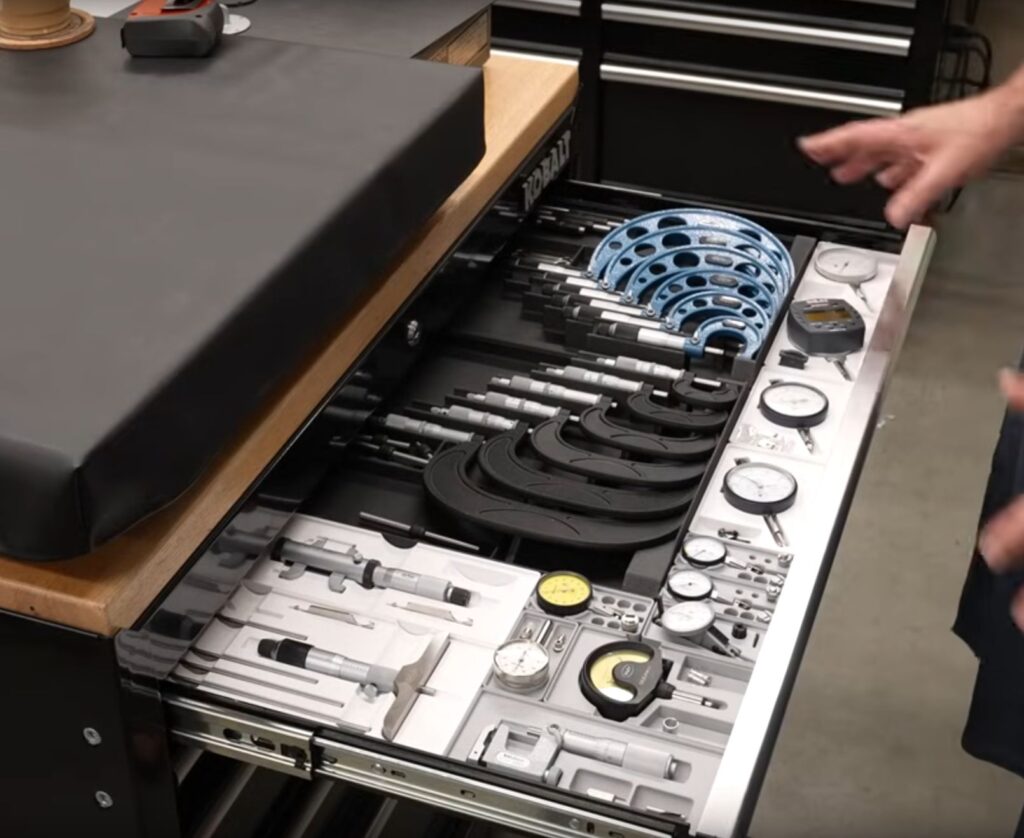
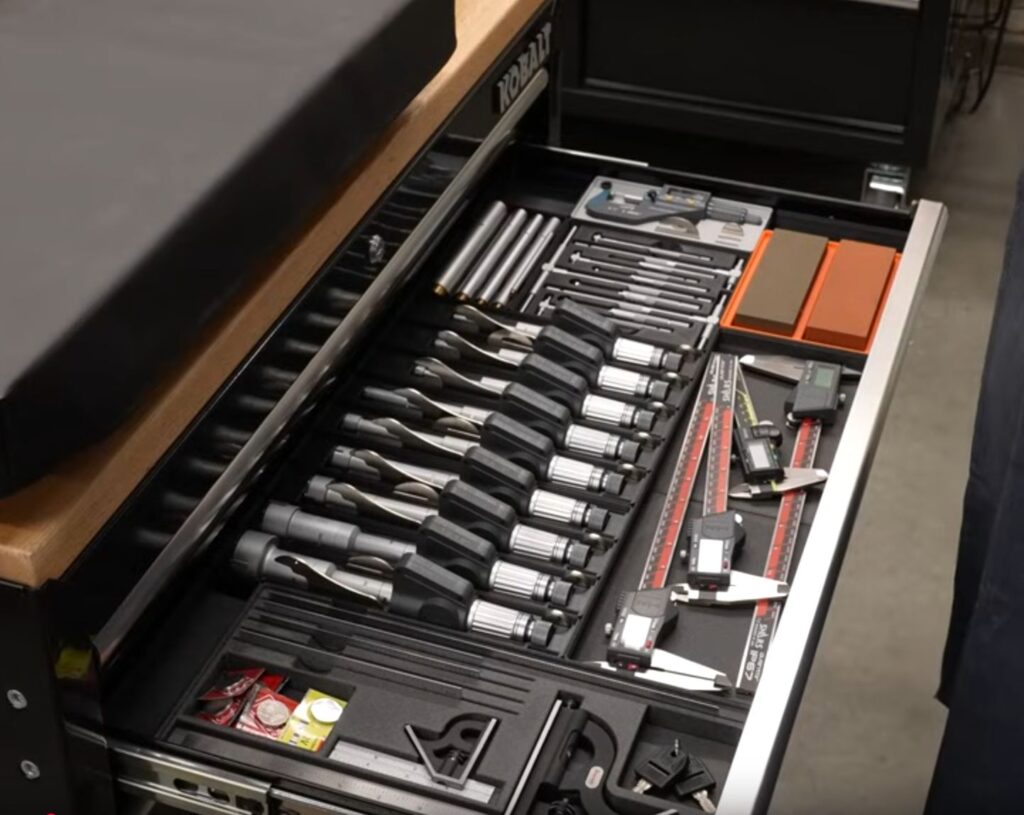
Theres also commercial Versions that are not compatible with Gridfinity – For example the Gridline System from Hoffmann, using a 25mm grid on a rubber mat:
I use the Gridline System in a few drawers for things like cutting tools:

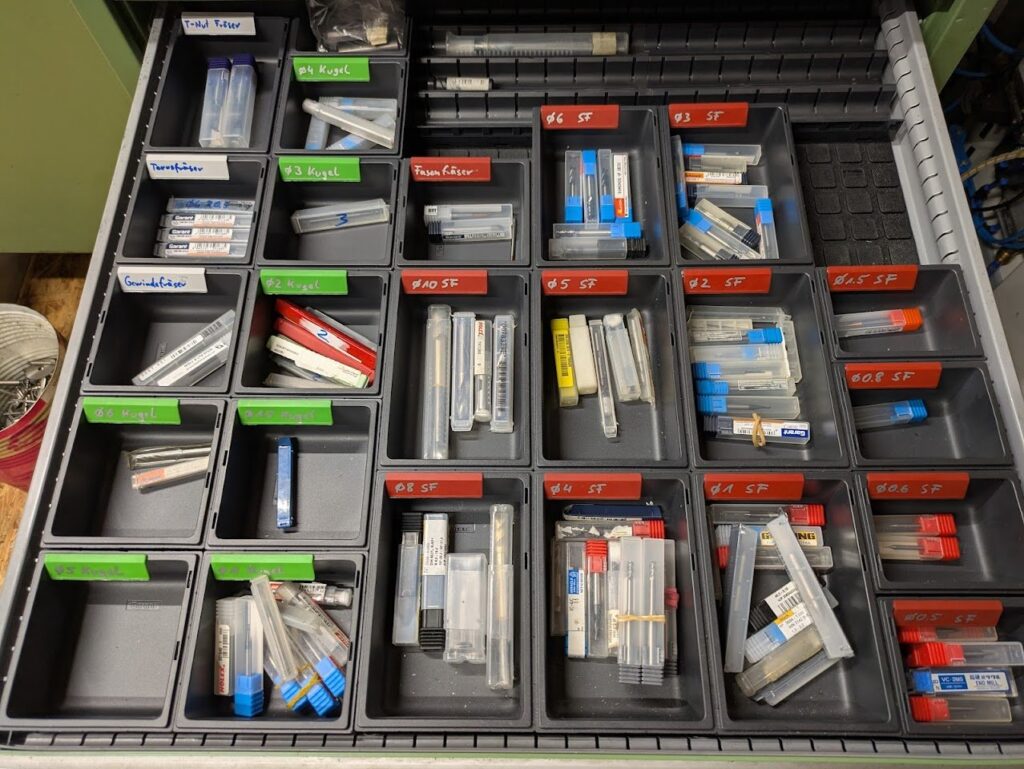
Since I don’t get much enjoyment out of 3d modelling and printing bins and sorters, doing the bulk of organization with commercially available bins is my preferred solution.
I can always add some specialty bins like these 3d printed shell mill holders with a peg in the center to keep the cutters from rattling around
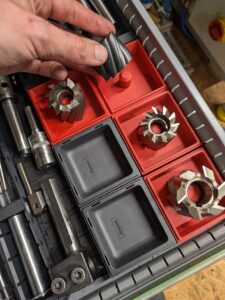
The appeal of modular systems like Gridfinity or Gridline is to not have to commit to a layout or certain tools. That was also my argument against shadow boards or milled foam inserts for a very long time. Also, since the design is open source, it’s easy to create and add special bins, holders and sorter for all kinds of tools and hardware.
It turned out that for me, once I figured out what tools I use most, I was able to purge away a lot of things and put them in deep storage or get entirely rid of them.
My everyday metrology tools are such a case – It used to be a quite messy and chaotic pile of tools, some of them on top of each other, scattered across a few drawers.
Foam shadow boards
I wanted to try milled foam. Compared to the rather light quality of Kaizen foam, the heavy closed cell foam used for this purpose lasts in my experience very long – At my day job we had tool carts with the same foam, milled for all the tools to fit neatly and they held up to industrial use and abuse very well. Very Expensive, but very nice.
Several companies have online configuration tools to create custom foam inlays from drawings or even photographs.
But being a penny pincher, I wanted to DIY it.
I ordered the sheets of foam from HBM:
https://www.hbm-machines.com/de/p/hbm-schaumstoffeinlage-585-x-410-x-40-mm-fur-werkzeugwagen-rot
The normal procedure would be to draw the layout of the foam inserts in CAD, maybe with the aid of photographs and then create toolpaths for a CNC mill from those drawings/models.
This is not a process that I enjoy very much, and I don’t have a large CNC router anymore to cut large sheets of foam.
Instead, I laid the tools physically out on the foam – The foam was cut to size beforehand with a circular saw – and traced them with a whiteout pen.
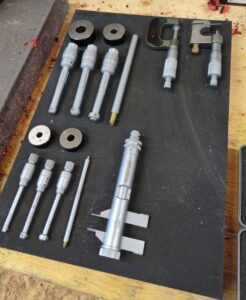
To cut the pockets, I went with the most primitive solution, a handheld woodworking router with a 6mm single flute endmill.
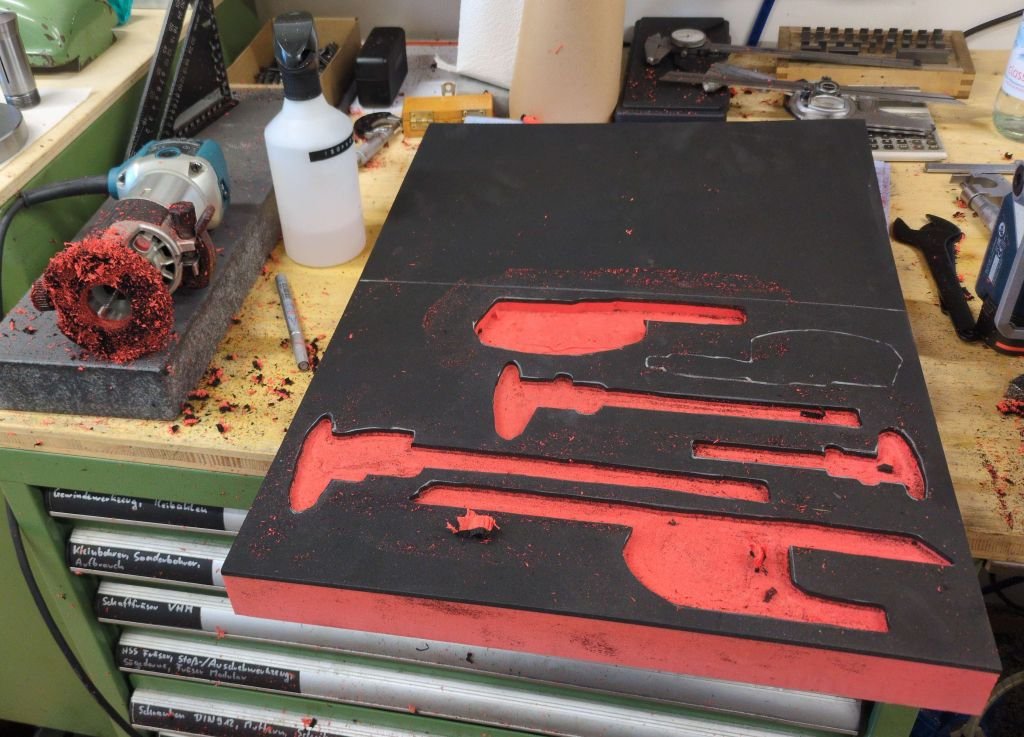
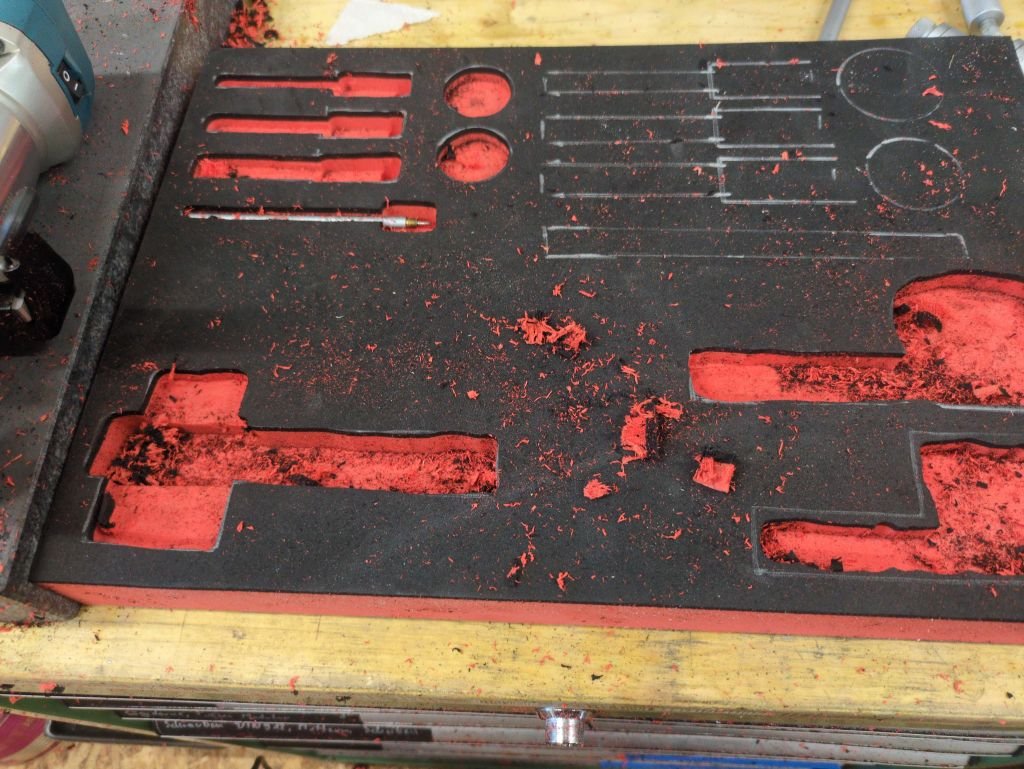
As expected, that worked marvelous – The foam cuts nicely with a crisp edge. As for milling strategy, I rough out most of the pocket with fast zig zag movements and then trace around the contour relatively slow, conventional milling. If your router allows for dust extraction, that helps with visibility and controlling the mess.
Round pockets and holes can be cut with a sharp woodworking drill bit or Forstner bit.
If you make a mistake, large sections of the foam can be cut out and a larger chunk can be pressed and glued in.
The results are decent:
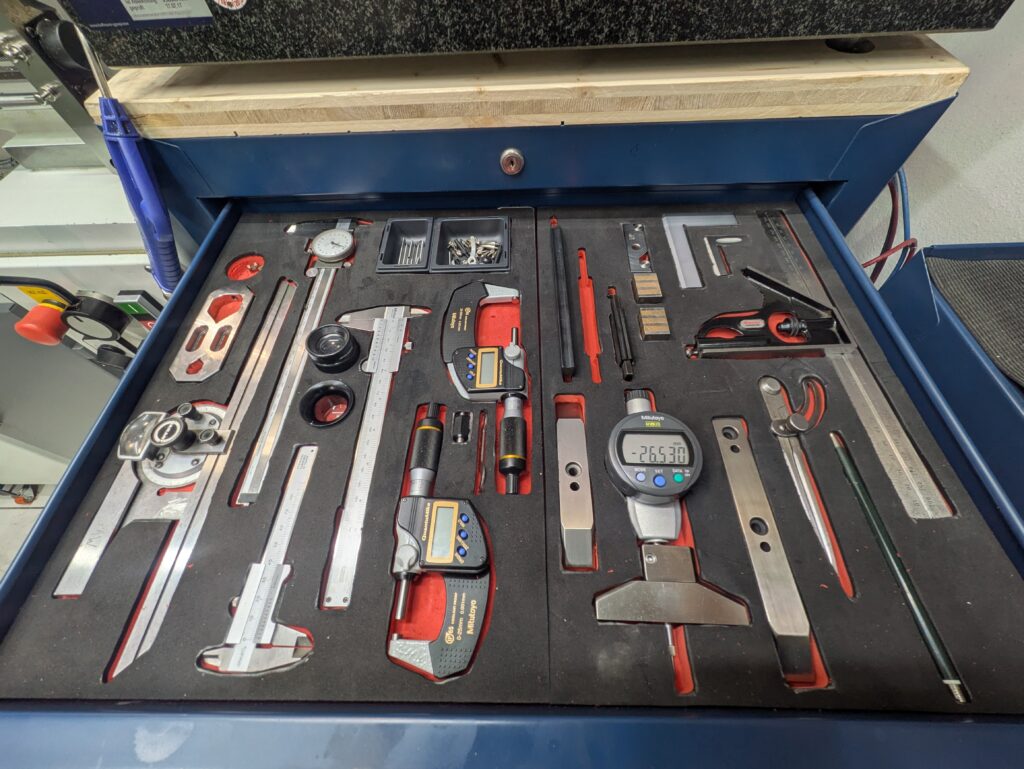
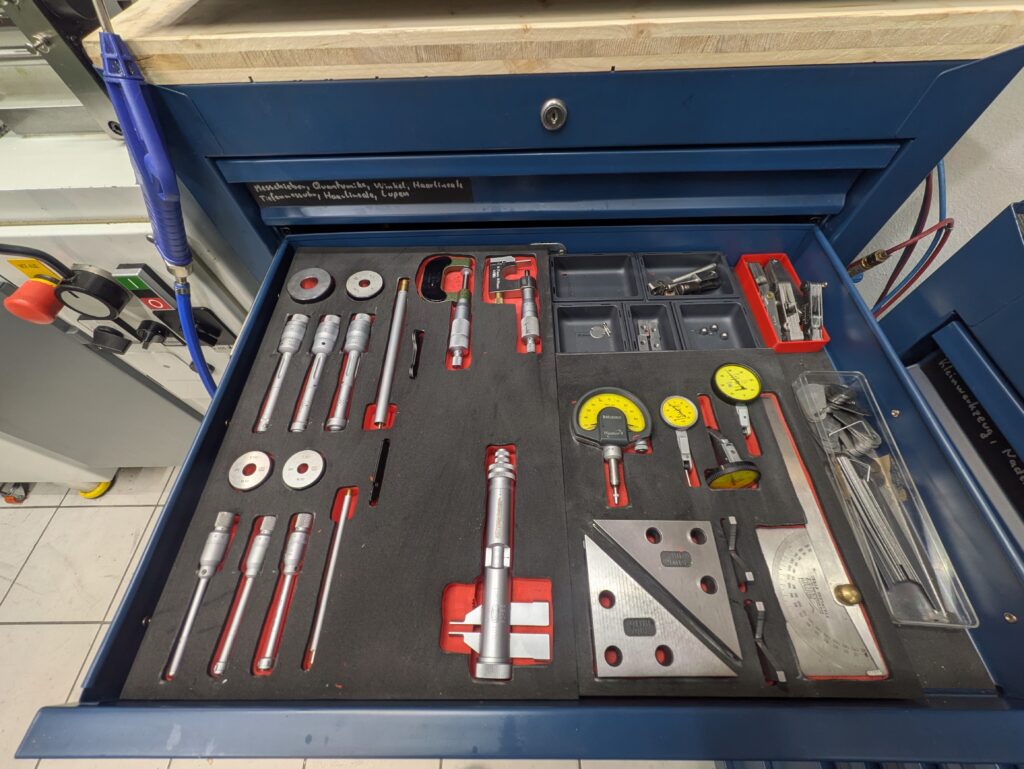
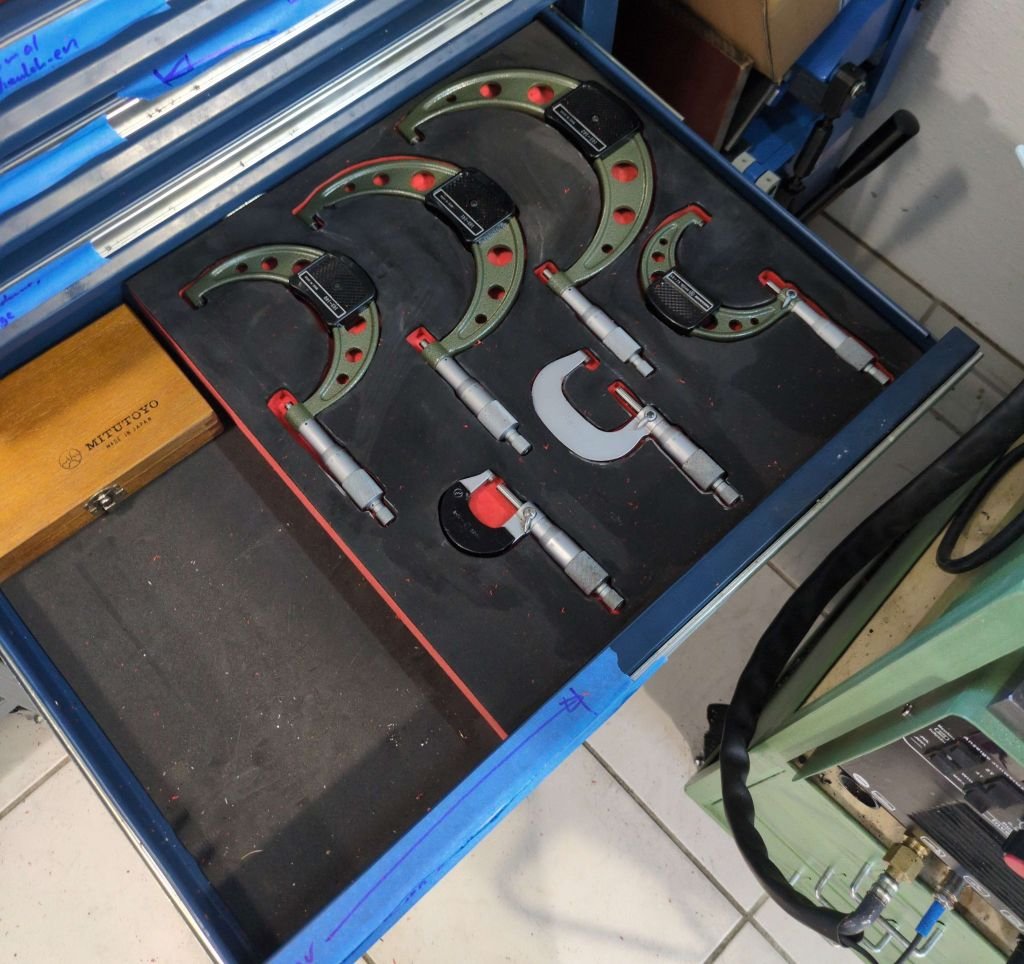
You can see that the drawers not only have form fitting cutouts for the tools, but also some integrated bins for items like screws or indicator snugs.
Not everything has to have a fitting pocket, having items in bulk in a bin is OK for me.
- There is no optimal solution
- Organization systems are temporary
- Don’t fear trying a temporary solution before fully commiting
- Things that might have worked for you in the past might not work anymore tomorrow